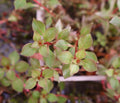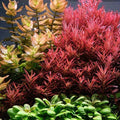Most Frequently-Asked Questions About Guppy Fish
Symptoms of a Dying Guppy Fish
Here are some signs that your guppy fish may be dying:
Lethargy: If your guppy fish is not moving around as much as usual or seems to be resting on the bottom of the tank, it could be a sign that it's not feeling well.
Loss of appetite: If your guppy fish is not eating or is eating very little, it could be a sign that it's not feeling well.
Rapid breathing: If your guppy fish is gasping for air at the surface of the water or seems to be breathing rapidly, it could be a sign of poor water quality or other health issues.
Fading colors: If your guppy fish's colors appear dull or faded, it could be a sign of stress or illness.
Erratic swimming: If your guppy fish is swimming erratically or seems to be struggling to swim, it may be a sign of poor health.
Visible physical differences: If your guppy fish has visible differences in its body, like sores, growths, or swelling, it could be a sign that it is sick.
Hiding: If your guppy fish is hiding or spending more time in one particular area of the tank, it could be a sign of stress or illness.
If you see any of these signs, you should find out why and take steps to fix the problem, such as testing the water parameters, changing the water, adjusting the temperature, or asking a vet or aquatic expert for advice.
How many guppy fish should be in a 20-gallon tank?
The number of guppy fish that can be kept in a 20-gallon tank depends on several factors, including the size of the fish, the filtration and aeration of the tank, and the frequency of water changes. As a general guideline, it's recommended to keep no more than 1 inch of fish per gallon of water in a freshwater aquarium.
Adult guppies typically grow to be around 1.5 to 2 inches in length, so a 20-gallon tank could comfortably accommodate around 10-12 adult guppies. However, if you plan to keep other fish or aquatic creatures in the tank, such as snails or shrimp, or if you want to provide more swimming space for your guppies, you may need to reduce the number of fish accordingly.
It's important to remember that overcrowding a tank can lead to poor water quality, increased stress and aggression among fish, and other health issues. So, it's always a good idea to learn about the needs of the fish you want to keep and make sure you give them the right environment for their health.
Can guppy fish live with snails in the aquarium?
Yes, guppy fish can live with snails in the same aquarium. In fact, snails can be beneficial to a freshwater aquarium as they help clean up algae and detritus and can also serve as a source of food for some fish species.
However, it's important to choose snails that are compatible with your guppies and won't harm them. The nerite snail, the mystery snail, and the ramshorn snail are all common snails that can live with guppies.
It's also important to keep an eye on the snails in the aquarium. They can reproduce quickly, so if you don't keep an eye on them, there could be too many of them.Also, some snails can spread quickly and hurt plants and other animals in an aquarium, so it's important to do research and choose snails carefully.
Overall, as long as the snails are compatible with your guppies and you take steps to maintain a healthy environment for all inhabitants, keeping snails in a guppie aquarium can be a great addition to the ecosystem.
What aquatic plants work best for guppy fish?
Guppy fish are small and active. They like having lots of places to hide and places to swim in their aquarium.Aquatic plants are not only aesthetically pleasing but also serve as a source of shelter and food for guppies and can help maintain good water quality in the aquarium. Here are some aquatic plants that work well in a guppy fish tank:
Java moss: This is a popular choice for guppy aquariums due to its ability to grow quickly and provide a lot of hiding places for guppies. It also helps maintain good water quality by absorbing nitrates and other nutrients.
Amazon Sword: This plant is ideal for creating a natural environment in a guppy aquarium. It has broad, sturdy leaves that provide shade and shelter for fish and can grow up to 20 inches tall.
Anubias: This plant is a slow grower but has sturdy leaves that guppies can hide in. It can also be attached to rocks or driftwood to create interesting landscapes.
Java Fern: This plant has wide, lacy leaves that provide shade and hiding places for guppies. It is easy to grow and can be attached to rocks or driftwood.
Water Wisteria: This plant is a fast grower and can be used to create a dense background in a guppy aquarium. It has feathery leaves that provide hiding places and food for guppies.
When choosing aquatic plants for a guppy fish tank, it's important to select species that are compatible with the tank's water parameters and lighting conditions. Some plants require specific water conditions and lighting levels to thrive, so it's important to research the needs of each plant before adding it to the aquarium.
















